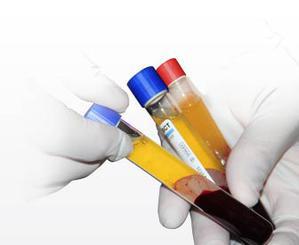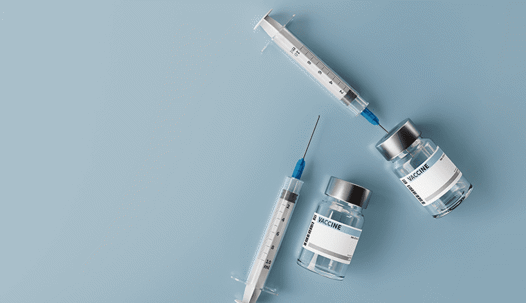Great advances have been made in recent years when it comes to treating pain and the many causes of chronic pain. While much of modern medicine still focuses on medications and drugs to treat pain, more and more doctors are looking to newer, more natural based approaches to dealing with pain. Pinnacle Pain Management is one such facility and we are proud to be leaders when it comes to the development and implementation of pain management practices, including PRP therapy and treatments. PRP stands for Platelet-Rich Plasma therapy. Although an emerging technology and technique that has been used most commonly in the field of sports medicine, it has been around since the mid-1990’s and has been used in dental and oral surgery to help speed healing and reduce pain following massive dental procedures. We have been leading the way in research and studies to develop new applications for PRP therapy and are proud to offer our patients options for treating chronic pain with PRP therapy.
Who Has Used PRP Therapy?

PRP treatment has been used for years in sports medicine and rehabilitation centers but it has recently gained widespread recognition thanks to Hines Ward and Troy Polamalu of the Pittsburgh Steelers. They received PRP therapy to help with minor injuries and pain issues prior to winning Super Bowl XLIII. They still remain some of the most vocal supporters of Platelet-Rich Plasma therapy in the sports world. Other high profile athletes who have seen improvement in many areas thanks to getting PRP therapy include Tiger Woods who had it following knee surgery and pitchers Takashi Saito and Bartolo Colon who are just two of the success stories out of Major League Baseball. Athletes of all kinds are trying PRP therapy and are singing its praises- football players, track runners, wrestlers, swimmers, gymnasts, and more! It is little wonder people outside of the sports community are taking note and asking how PRP therapy might be able to help them be free of pain.
How Is PRP Administered?

PRP therapy is a fairly simple and straightforward procedure that takes approximately twenty minutes to complete. It begins with collection of 30 milliliters of the patient’s blood that is put in a centrifuge in order to separate the platelet-rich plasma from other components of the blood. This is the material that is used for treating chronic pain with PRP therapy and is what makes the pain management practices of Pinnacle Pain Management so successful. Doctors then inject the concentrated platelets into the site of the injury often using ultrasound guidance for accuracy. This is where the natural wonder and power of the body’s own cells comes into play and starts to work its magic.
Platelets function as a natural reservoir, much like the more well-known and famous stem cells, and work to turn on and stimulate various growth factors that are essential for the body’s ability to heal and repair injured tissues. The growth factors that the platelets secrete stimulate healing and regeneration by increasing collagen production, enhancing tendon strength, boosting stem cell proliferation, and helping improve tenocyte-related gene and protein expression. These growth factors also improve oxygen levels, increases blood flow, improves muscle mass, and helps all surrounding tissues to be healthier and more resilient. PRP activates tenocytes to proliferate quickly and produce collagen to repair injured tendons, ligaments, cartilage, and muscles.
How Soon Can You See Results from PRP Therapy?
Most patients will experience a notable decrease in pain each passing day following the injection. Pain intensity becomes less and less as functional mobility, regenerated cells, and general functional ability increase. There is generally a steady improvement seen for up to 1-2 month following your PRP therapy treatments. The improved healing and the reduction of pain will last for a good while and most of our patients enjoy less pain for months following their treatment session. By treating injured tissues before there is a chance for any damage to worsen and progress, surgical intervention may be avoided and recovery time can be greatly reduced. This is why Platelet-Rich Plasma therapy is such a popular option for dealing with pain that results from injuries- it eases pain and also speeds healing. “Injuries treated with PRP therapy include: rotator cuff, quadriceps, hamstring, Achilles tendon injuries and tennis elbow. Essentially any tendon or ligament injury except complete tears may be treated successfully with PRP” (OrthoNC). PRP therapy is exactly the treatment needed to reduce the downtime of the athlete while also reducing the chance for re-injury or perhaps the risk of a more serious injury that will result in surgical intervention or permanent disability.
Is PRP Therapy A Substitute for Surgery?

It can reduce the need or urgency for surgery and many patients find that Platelet-Rich Plasma therapy is an alternative to surgery that works for them. However, it is important to remember that every person is different and every situation is unique- what works for one individual may not be the best thing for someone else or may not be exactly what they need. While many chronic conditions may respond to PRP therapy, it can never be known if the procedure will remove any and all need for surgery down the road. Extensive injury may respond to Platelet-Rich Plasma therapy in regards to pain levels and the initiation of the healing process- but full recovery may need to be done in order to attain full and complete healing. The pain-relieving response that this treatment and therapy initiates within the body is then augmented by the superior healing factors contained within the PRP. Therefore, with PRP therapy being used as part of a treatment plan, many patients end up seeing great results and it may also help improve the chance of healing and diminish risk for further injury or damage. A positive result may lead to a decrease need for surgical intervention. However, even as amazing as Platelet-Rich Plasma therapy is among current pain management practices, it is not a cure all and it is not a miracle pill for living life free of all pain. We here at Pinnacle Pain Management have made great strides when it comes to treating chronic pain with PRP therapy but there is still much to learn- and you can be a part of medical history with us. Call us today to set up your consultation and see what PRP treatments can do for you and how they can help you get one step closer to living life with less pain.

